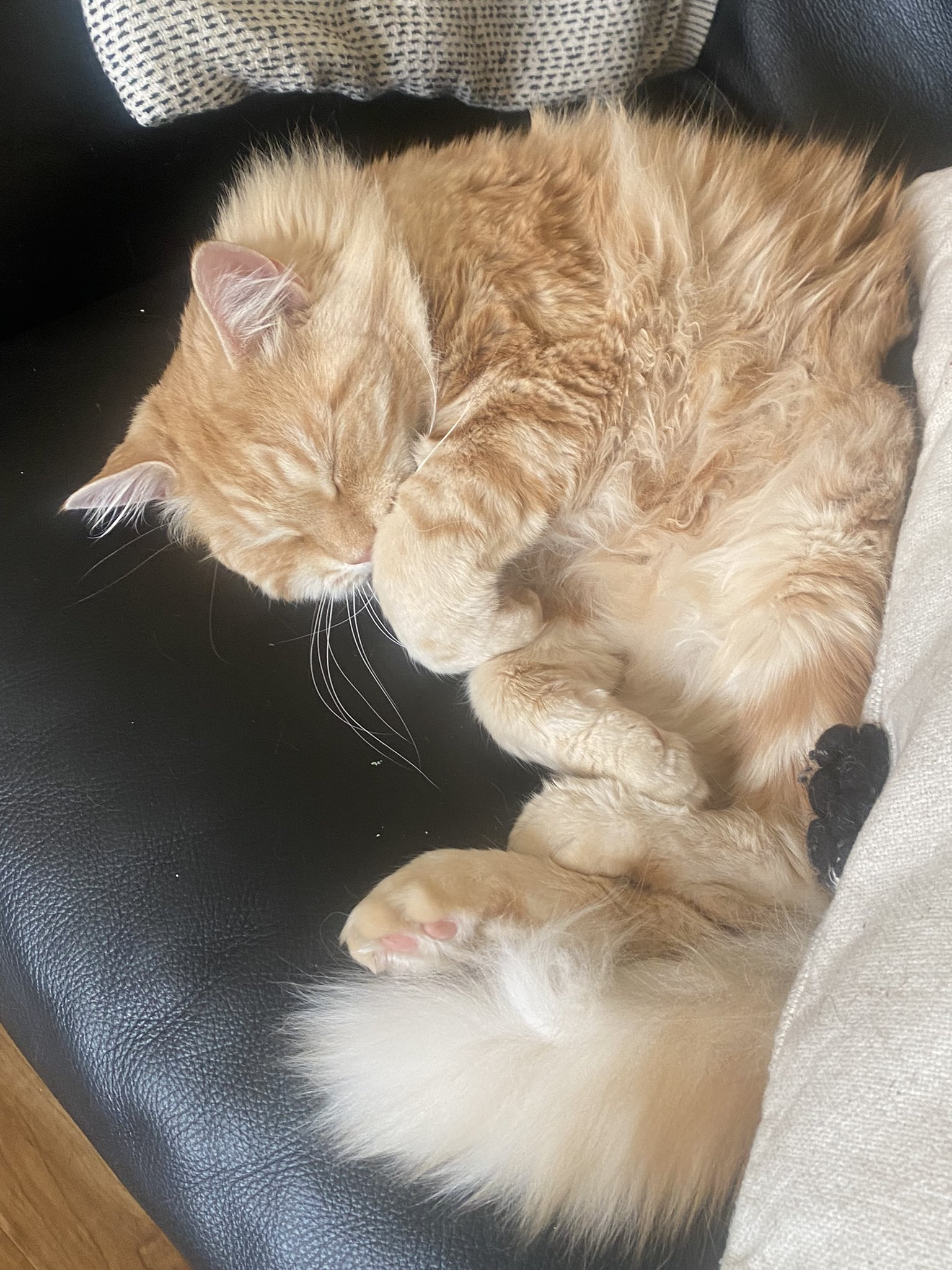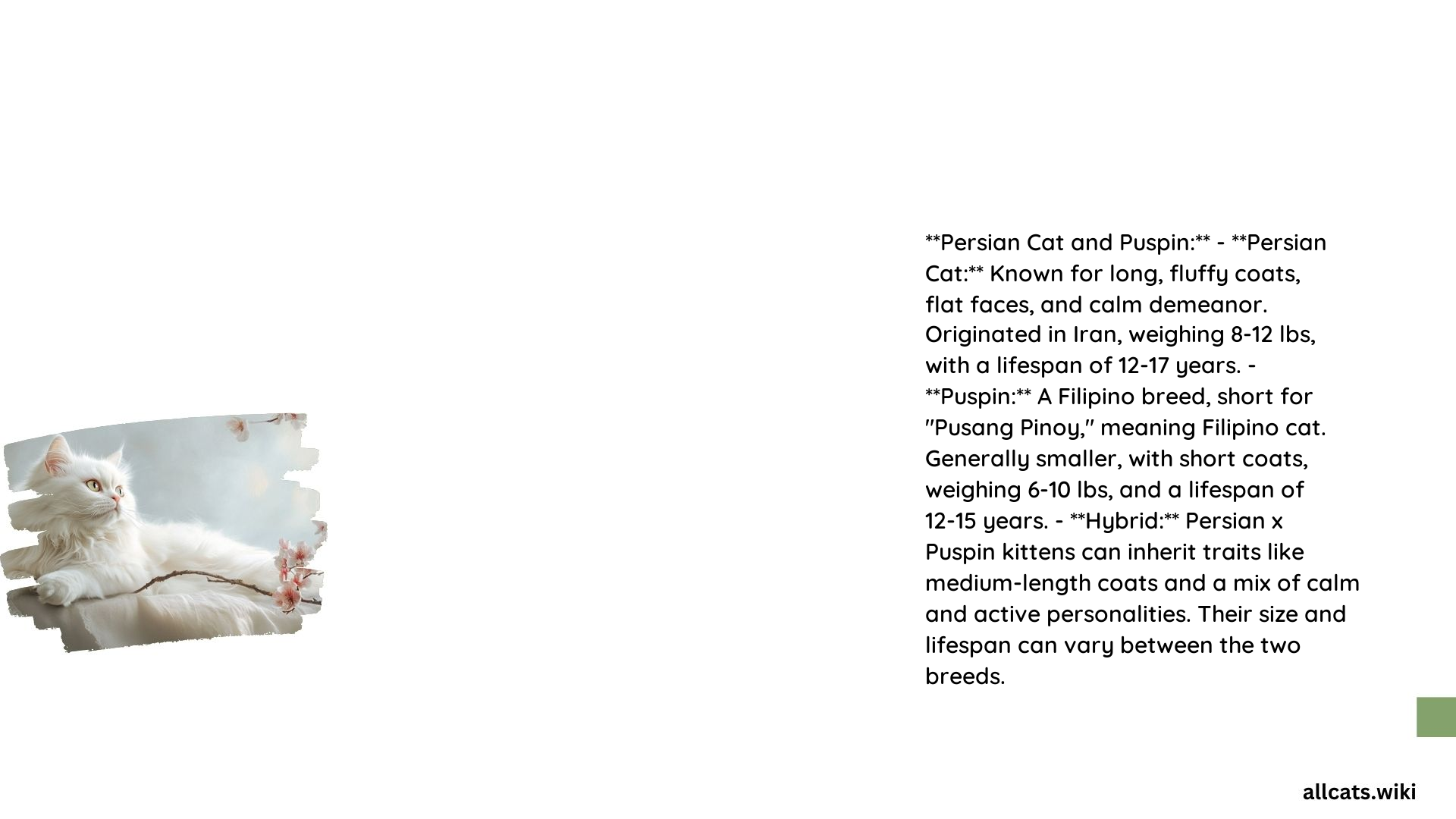Persian Cats and Puspins are two distinct feline breeds with unique characteristics and behaviors. Persian Cats are known for their gentle, calm, and affectionate nature, while Puspins, which are assumed to be Philippine Domestic Shorthairs or similar local breeds, are generally more adaptable, friendly, and active.
What are the Temperament and Behavior Traits of Persian Cats?

Persian Cats are often reserved around strangers but bond deeply with their family members. They are smart, though they can be slow learners, and they appreciate mental stimulation through toys. Persian Cats are generally quiet, docile, and prefer calm environments. They are not overly active and enjoy relaxing and lounging around.
How do Puspins Typically Behave?

Since “Puspin” is not a recognized breed, we can generalize based on typical domestic shorthair characteristics. Domestic shorthairs are generally adaptable, friendly, and can be quite active. They tend to be more energetic than Persian Cats and may require more stimulation and activity.
How do Persian Longhair Traits Impact their Interactions with Puspins?
Persian Cats have long, luxurious coats that require daily grooming to prevent matting and tangling. This high-maintenance grooming can be a significant factor in their overall health and well-being. The calm and gentle nature of Persian Cats, combined with their need for regular grooming, may influence their interactions with more energetic pets like Puspins. Persian Cats may prefer quieter environments and could be stressed by overly active companions.
What is Brachycephalic Syndrome in Persian Cats?
Brachycephalic Syndrome is a condition characterized by breathing difficulties due to the flat face of Persian Cats. Symptoms include panting, wheezing, and difficulty eating or drinking. This condition is caused by the brachycephalic (flat-faced) skull structure of Persian Cats, which leads to a shorter airway. Owners should ensure their Persian Cats have access to cool, well-ventilated areas, use water fountains instead of bowls, and feed them kibble specifically designed for brachycephalic breeds to ease their breathing and eating difficulties.
What is Polycystic Kidney Disease (PKD) in Persian Cats?
Polycystic Kidney Disease (PKD) is a common genetic disorder in Persian Cats, causing the formation of cysts on the kidneys. In the early stages, the disease may be asymptomatic, but as it progresses, symptoms can include increased thirst and urination, weight loss, and decreased appetite. Ultrasound is typically used to diagnose PKD, and genetic testing can identify carriers of the disease. While there is no cure for PKD, managing the symptoms and slowing the progression of the disease through diet and medication can improve the quality of life for affected cats.
Can a Persian Cat Get Along with a Puspin?
Introducing a Persian Cat to a Puspin should be done slowly and carefully to ensure both pets feel comfortable. Given the calm nature of Persian Cats, they may appreciate a gentle and non-aggressive introduction. Ensuring both pets have separate spaces where they can retreat if needed can help reduce stress. Providing a calm environment that caters to the Persian Cat’s need for quiet can also help.
What are the Common Health Issues in Persian Cats?
- Brachycephalic Syndrome: Affecting breathing and eating.
- Polycystic Kidney Disease (PKD): A genetic disorder causing kidney cysts.
- Hypertrophic Cardiomyopathy: A heart condition that can lead to heart failure.
- Dental Issues: Due to their brachycephalic skull, Persian Cats are prone to dental crowding and other oral health issues.
- Skin Irritation: Matting and tangling of their long coat can cause skin irritation if not properly groomed.
To prevent and manage these health issues, regular grooming, annual veterinary check-ups, a balanced diet, and a cool, well-ventilated environment are recommended.
Statistics, Costs, and Specific Products for Persian Cats
- The average lifespan of a Persian Cat is 10 to 15 years with proper care.
- Regular grooming can be costly, especially if professional grooming services are used.
- Veterinary care for conditions like PKD and brachycephalic syndrome can be expensive, with costs varying based on the severity of the condition and the treatments required.
- Specific products that can benefit Persian Cats include high-protein food designed for brachycephalic breeds, water fountains to keep their face and chest dry, and fine-toothed combs for daily grooming to prevent matting and tangling.
References:
1. Common Persian cat personality traits – Betterpet
2. What to Know About the Persian Cat – WebMD
3. Persian Cats: Overview and Key Traits – Basepaws
